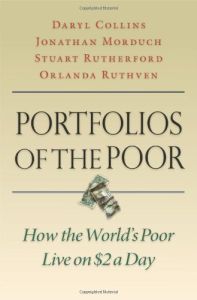
Portfolios of the Poor
How the World’s Poor Live on $2 a Day
Read or listen offline
Recommendation
The World Bank said in 2005 that 2.5 billion people live on less than $2 per person, per day. Researchers Daryl Collins, Jonathan Morduch, Stuart Rutherford and Orlanda Ruthven say the poor rarely spend all the money they get. After using financial diaries to track the day-to-day monetary activities of more than 250 households in Bangladesh, India and South Africa, the authors report that the poor are active money managers who handle relatively large cash flows and usually build savings into their “portfolios.” The authors believe international development efforts should provide poor households with better financial tools for managing their current incomes. The authors describe the challenges and strategies of impoverished households, and paint academically restrained – but still touching – portraits of individual families. getAbstract recommends this meticulous research and its conclusions to international development workers, microbankers, nongovernmental organization officials and social entrepreneurs. Microfinance providers will find guidance to tailoring products to fit the complexity of poor people’s lives.
Take-Aways
About the Authors
Daryl Collins is a senior associate at Bankable Frontier Associates. Jonathan Morduch teaches public policy and economics at New York University. Stuart Rutherford is a founder of the microfinance institution SafeSave. Orlanda Ruthven recently completed a doctorate in international development and works on youth employment and labor standards in India.



















Comment on this summary or Начать обсуждение